How to Talk about Racism and Its Effects With Kids
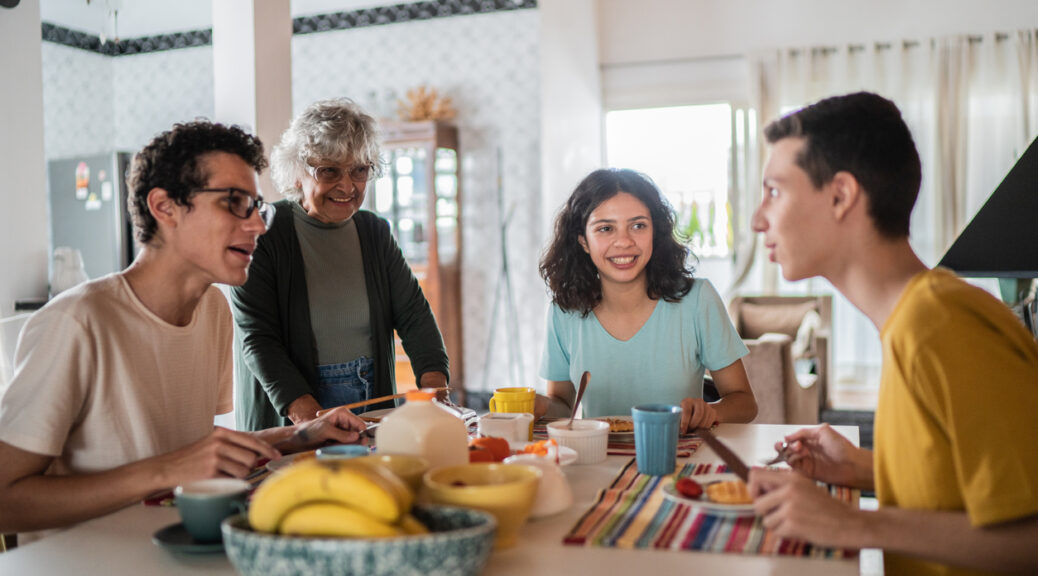
One of the more challenging aspects of being a caregiver is helping children and teens understand complex, difficult topics like racism, inequality, prejudice, injustice and more. As childhood adversity expert Dr. Nadine Burke Harris wrote in a powerful article, the daily experience of racism has directly affected the biology and health of Black children and adults. The discrimination, toxic stress, and feeling of being dehumanized and traumatized is literally sickening and killing people of color. So, how do you talk about racism with kids?
How do you make the conversation meaningful? What’s too much, and what’s not enough? What if our children are scared? And what if we, as caregivers, are nervous too?
While there is no one-size-fits-all approach, it is never too early for caregivers to start the conversation about the impact of racism. Although caregivers may initially struggle to talk to their children about issues like diversity, racism and discrimination, it’s crucial for them to understand the effects.
KVC is proud to serve diverse groups of people from all walks of life. For many children, prejudice and racism is something they have encountered at school, on the playground, in their communities or even at home. By facilitating productive discussions around racism and discrimination, more families can proactively take part in putting an end to racism. Discover what you can do to lead a meaningful conversation in your home.
Creating an Environment for Feelings and Questions
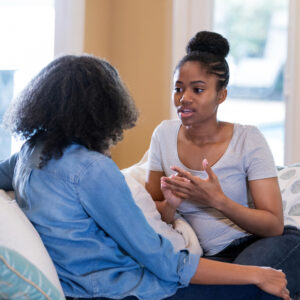 From classmates to the media and more, our children frequently encounter hurtful words and actions, and they may have a hard time processing what it all means for them and the world around them. Creating a safe place for children to open up about their curiosity is essential for caregivers and children.
From classmates to the media and more, our children frequently encounter hurtful words and actions, and they may have a hard time processing what it all means for them and the world around them. Creating a safe place for children to open up about their curiosity is essential for caregivers and children.
Let children know they’re welcome to express their feelings — and you, as the adult, want to listen, discuss and offer support. It’s also essential for caregivers to share their feelings with children in a healthy way. When mutual trust and a safe environment are developed, children feel safe to open up and return to the conversation when needed.
To better prepare for these types of discussions, here are some tips:
Check in With Yourself First
Serious topics can trigger serious emotions. Especially when racism and other impactful topics are in the headlines, it’s important to ensure you’re in the right emotional space yourself to have this courageous conversation. Are you in a calm state of mind? Do you feel you’re able to be present and stay grounded? Be sure you, as a caregiver, are ready to take on the topic seriously to provide learning and a bonding experience with your child.
Create a Safe Space and Choose a Safe Time
Allowing children to ask questions, move through their feelings and discuss heavy topics without fear cultivates trust. Try having the conversation in a space without distractions, at a time when you won’t feel rushed. And watch for other important signs, like distress. If things get too overwhelming, it’s okay to take a break.
Listen to Your Child
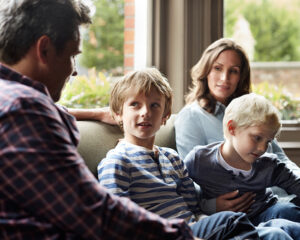 When sitting down and talking about racism with your child, see if you can lead by asking thoughtful questions, but then really hear their thoughts and solutions. Children often have imaginative ideas on difficult subjects and may share something heartfelt, empathetic and mature.
When sitting down and talking about racism with your child, see if you can lead by asking thoughtful questions, but then really hear their thoughts and solutions. Children often have imaginative ideas on difficult subjects and may share something heartfelt, empathetic and mature.
Discuss Big Topics In Small Doses
The world is a big, confusing place with both good and bad. Racism has a long, layered history attached. Although there have been improvements in how society views diversity, there’s still a long way to go, and racism is prevalent. Show and discuss news events, videos and images gradually so children can process the information without getting overwhelmed.
Cultivate Resilience
Throughout history, many families have experienced various prejudices and traumas. While it’s important not to diminish the pain and tragedy, you can celebrate the survival, triumphs and compassion of those narratives and help children see resilience in the face of adversity.
Agree on Action and Education
A meaningful way to talk about racism with children and not perpetuate unfair actions is to correct misinformation and tell them the facts. Educate yourself and your children by learning the correct terms and definitions, current issues and the history of racism for a more productive discussion.
How to Direct Discussions to Fit the Child
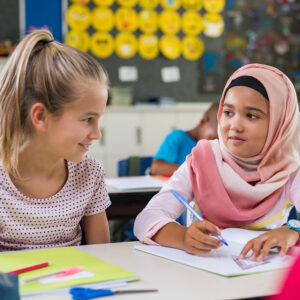 The next piece of the puzzle is to adjust the conversation to fit your child’s age and maturity level. Big-picture topics, like race and racism, can be difficult for children of all ages to grasp. By first considering the maturity and age of your child, it’s important to prepare yourself with discussion topics and engage in age-appropriate dialogue. Conversations and questions will vary depending if the child is younger or closer to their teen years.
The next piece of the puzzle is to adjust the conversation to fit your child’s age and maturity level. Big-picture topics, like race and racism, can be difficult for children of all ages to grasp. By first considering the maturity and age of your child, it’s important to prepare yourself with discussion topics and engage in age-appropriate dialogue. Conversations and questions will vary depending if the child is younger or closer to their teen years.
Conversations with Younger Children
Throughout preschool and kindergarten, children develop a sense of fairness and what is right and wrong. Children this age might have difficulty grasping the idea of racism, so starting with smaller concepts is easier for them to process.
These discussions can focus on what is fair and what is not, and should include examples they can relate to. One possible example includes:
“What if there was a rule that everyone with green eyes had to eat a different lunch than the rest of the class? Is that fair?”
Using an example that relates to the child you’re speaking to will also allow them to feel an emotional connection to the topic. Teach them to celebrate what makes each person unique!
Conversations with School-Age Children
Once your child has been around a variety of other children and has possibly already experienced discrimination in some form or another, it’s best to use practical examples to help them understand racism. A practical everyday example might be, “What if a couple of kids were holding all the outside balls during recess and wouldn’t let any other kids play with them?” Or, “How would you feel if you saw an older kid bullying a younger kid?”
For older school-age children, it’s okay to ask what they’ve experienced. You might try,
“Have you ever seen someone treated unfairly at your school? How do you think they felt? How did you feel?”
After spending a little time discussing the examples, you can then relate them to real-life examples of people or groups that have experienced discrimination. The goal of this type of conversation is to help increase their empathy and develop a passion to stand up for themselves and others.
Conversations with Older Children/Teens
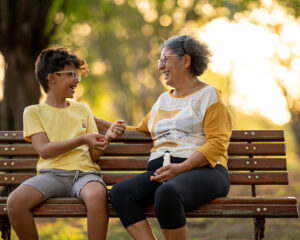
Preteens and teenagers better understand the topic of racism and discrimination. By this point, many have already experienced discrimination in their own lives and felt the effects of racism at school, on social media, in their communities, etc. If they have not experienced or witnessed racism directly, they have likely heard of events in the news or discussed radical points in our history.
Even with their higher level of understanding, they may still have questions or thoughts that they’d like to clarify. It’s also possible they feel helpless and don’t know how to make a difference. Discussing values, how to advocate for themselves and others and what actions they can take to be involved in their community can go miles in helping youth feel empowered.
Lead by Example
While talking about racism is important for learning and creating trust, children learn best by watching what those in their family do. Prejudices are learned over time. With this in mind, take the lead and provide positive interactions with people who are different from you and your family. Here are a few ways to bring diverse interactions into daily life:
Celebrate Diversity
 When parents and caregivers interact with a variety of people, children learn about different perspectives and life experiences they otherwise wouldn’t. This can help youth celebrate diversity. Joining a community program or choosing a diverse sports team or activity class gives children and families the chance to make friends with people from different backgrounds.
When parents and caregivers interact with a variety of people, children learn about different perspectives and life experiences they otherwise wouldn’t. This can help youth celebrate diversity. Joining a community program or choosing a diverse sports team or activity class gives children and families the chance to make friends with people from different backgrounds.
Learn About a New Culture
Create opportunities to learn about a new culture together. Choose a few cultures unlike yours to explore. You can read books, watch movies, prepare recipes, learn about history or listen to music. If you want to further immerse your family, try attending cultural fairs, going to museums, dining out or looking at artwork. This shows children that embracing people who are different from them is joyful!
Advocate Together
Standing up for others takes courage. But children are more likely to stand up for something that isn’t fair, or someone being treated wrongly, if they witness their caregivers modeling that behavior. Families should show children multiple ways to advocate for others, like standing up to bullies, contacting elected officials, supporting a specific cause, etc. This brings families together and sets a standard for children to follow.
The goal is to keep the door open and to keep talking about racism and other complex topics. Fostering compassionate, courageous children who want to help others takes time, conversations and understanding. But the best way for children to learn is by watching their families lead by example.
Take every opportunity to challenge racism, demonstrate kindness and stand up for every person’s right to be treated with respect. Our team here at KVC is here to help. We want every child and adult to be safe and connected to a healthy community. If your family needs help in addressing mental health, behavior or family functioning concerns, learn more about the therapy services we provide and reach out to your local KVC office.
For more information about our services and how you can get involved in the fight for equity, compassion and belonging, explore how you can become an advocate.
